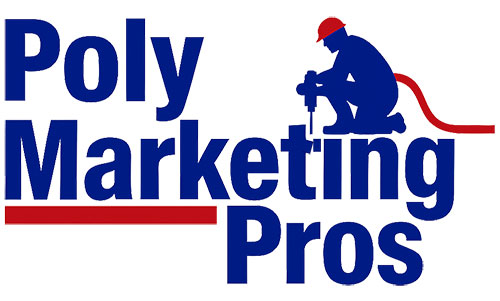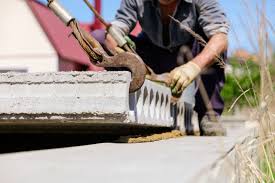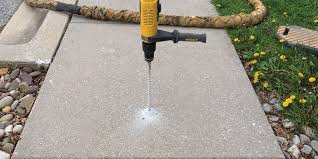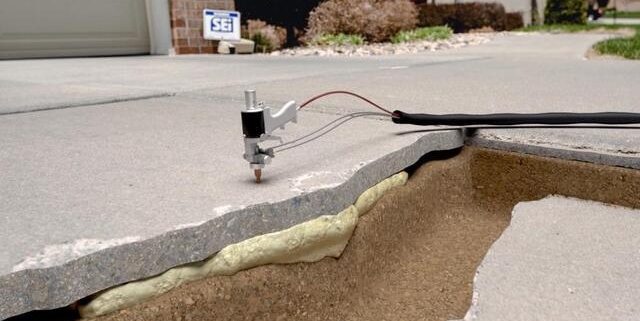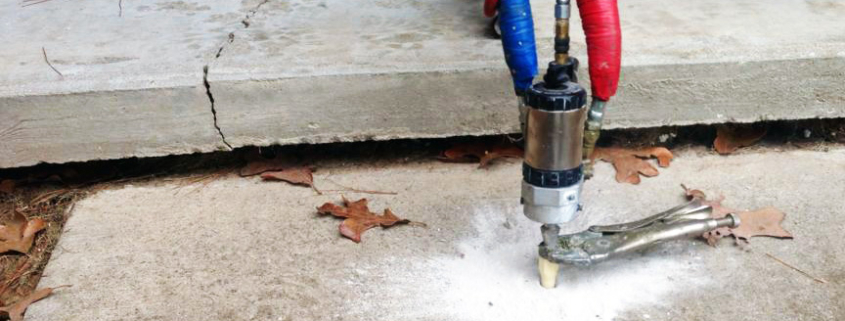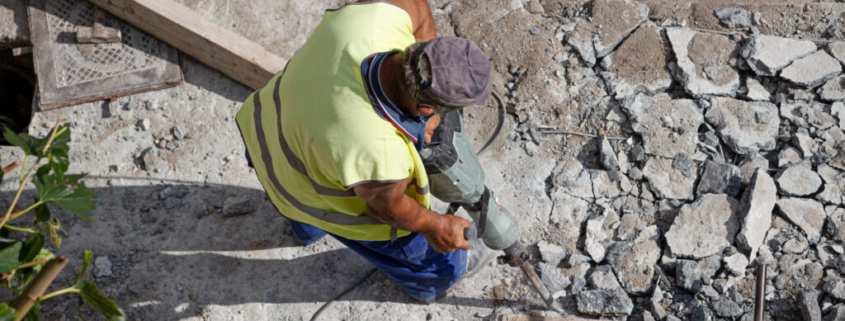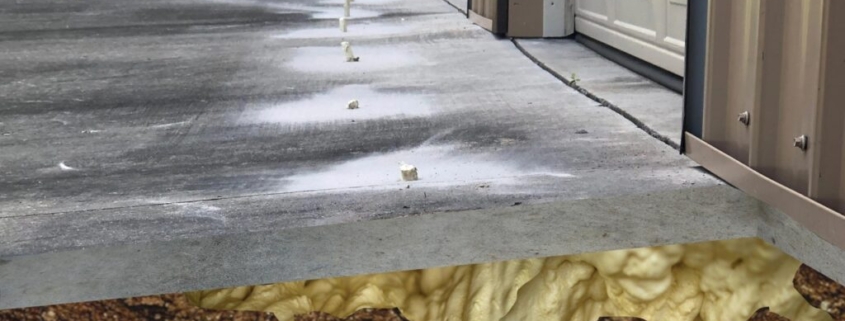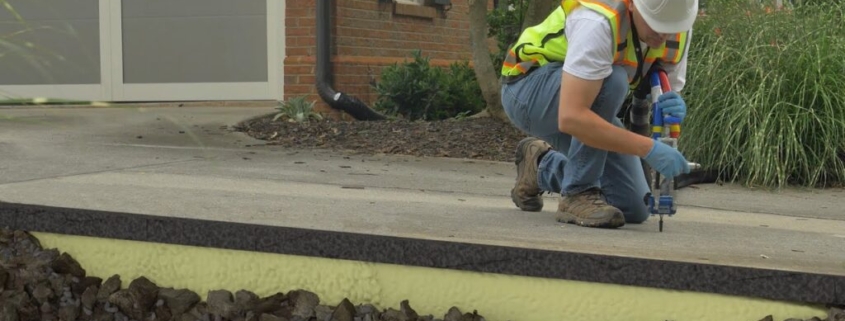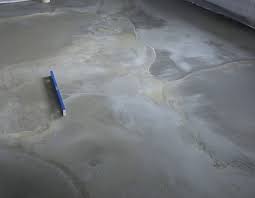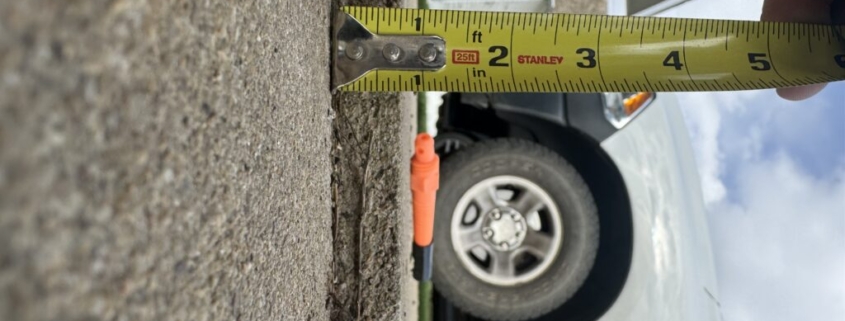Concrete lifting is an essential solution for homeowners and businesses alike, especially when dealing with sinking or uneven surfaces. Over time, factors such as soil erosion, water damage, and heavy loads can cause slabs to settle, creating hazards and compromising structural integrity. Choosing local concrete lifting contractors ensures timely and efficient repair, maintaining both the aesthetic and functional quality of your property.
Common Causes of Concrete Settling and Sinking
Soil Erosion and Compaction
Soil erosion and compaction naturally occur over time, leading to voids beneath concrete slabs. When soil becomes unstable, the concrete above may begin to sink or shift, creating uneven surfaces that require concrete slab leveling near me.
Effects of Moisture and Weather
Moisture affects the soil beneath concrete by creating pockets and voids that destabilize it. Freeze-thaw cycles in certain climates cause soil expansion and contraction, further compromising the slab’s stability.
Structural Impacts of Heavy Loads
Heavy vehicles, equipment, and constant foot traffic place stress on concrete, accelerating the settling process. This is especially common in driveways, parking lots, and industrial settings, making the need for affordable concrete lifting solutions critical.
What is Concrete Lifting?
Concrete lifting is a method used to raise and stabilize sunken slabs. Instead of tearing out and replacing an entire slab, concrete lifting injects specialized materials beneath it, filling voids and applying pressure to return the slab to a level position. This solution is cost-effective and minimally invasive, allowing for a faster repair that extends the life of the concrete surface.
Types of Concrete Lifting Techniques
Polyurethane Foam Injection
Polyurethane foam injection is a popular choice due to its fast cure time and precision. The foam expands to fill voids, stabilizing the slab almost immediately and making it a go-to method for residential concrete lifting experts.
Traditional Mudjacking
Mudjacking involves pumping a cement-based slurry beneath the slab. It’s effective and budget-friendly but may require more maintenance over time due to its heavier weight, unlike modern techniques provided by the best concrete lifting companies.
Epoxy Resin and Other Specialized Methods
For high-strength needs, epoxy resin is used to lift and stabilize slabs. Though costlier, it’s ideal for industrial and high-traffic areas that require maximum durability and reliability.
Benefits of Choosing Local Concrete Lifting Experts
Knowledge of Local Soil and Weather Conditions
Local concrete lifting contractors understand the unique soil compositions and weather patterns in your area, allowing them to tailor solutions effectively to ensure long-lasting results.
Faster Response Times and Efficient Scheduling
Choosing local experts ensures quicker service, minimizing disruption and allowing projects to be completed more efficiently. Their proximity makes it easier to access concrete lifting services near me when you need it most.
Building Trust with Local Service Providers
Local experts have a reputation within the community and are invested in maintaining it. This creates a foundation of trust, with providers committed to offering high-quality, reliable service.
How to Find the Right Concrete Lifting Company Near You
Online Research and Customer Reviews
Start by searching for local companies that offer concrete raising near me. Look for reviews and ratings to gauge the reliability and quality of service. Positive testimonials and high ratings indicate strong customer satisfaction.
Checking Credentials, Licenses, and Certifications
Verify that the contractor holds the necessary certifications and licenses to perform concrete lifting. This ensures you’re hiring a qualified professional who meets industry standards.
Requesting Referrals from Friends or Neighbors
Recommendations from trusted sources can lead you to reputable contractors who have successfully completed projects for others in your community.
Questions to Ask When Hiring a Concrete Lifting Contractor
Experience and Expertise in Concrete Lifting Techniques
Inquire about the contractor’s experience with specific lifting methods, such as polyurethane foam injection or mudjacking, to ensure they’re proficient in the technique needed for your project.
Warranty and Quality Guarantees on Services
A reputable contractor should offer warranties on their work, giving you peace of mind that the repair will last. Ask for details on guarantees and post-service support.
Timeline and Estimated Costs
Request an estimated timeline and cost for your project, so you know exactly what to expect in terms of budget and duration. It’s essential to find affordable concrete lifting solutions that fit your needs.
Understanding Concrete Lifting Costs
Factors Influencing Costs: Materials, Labor, and Area Size
The cost of concrete lifting varies depending on factors like the type of materials used, the size of the area, and the amount of labor required. Local contractors may offer more competitive rates.
Comparing Local Rates with Average Industry Costs
Obtain multiple quotes from local contractors to compare rates. This ensures you receive fair pricing that reflects the scope of work and guarantees high-quality results.
Cost-Benefit Analysis of Concrete Lifting vs. Replacement
Concrete lifting is generally more affordable than full replacement. By saving on materials and labor, you can achieve similar results without the extra expense, making it the best option for both residential and commercial needs.
Signs Your Property Needs Concrete Lifting Services
Visible Cracks, Gaps, and Sinking Areas
Noticeable cracks or gaps in concrete are clear signs of foundational issues that concrete lifting can address. These problems can worsen if left untreated.
Pooling Water and Drainage Issues
If water pools on your concrete surface, it may indicate low points that need to be leveled. Proper leveling can improve drainage and prevent future damage.
Trip Hazards on Walkways and Driveways
Uneven concrete can create tripping hazards that are especially dangerous in high-traffic areas like walkways and driveways. Concrete slab leveling near me can help eliminate these risks.
Concrete Lifting for Residential vs. Commercial Properties
Residential Applications: Patios, Sidewalks, and Driveways
Concrete lifting is commonly used for residential projects like patios, sidewalks, and driveways, where aesthetics and safety are top priorities.
Commercial Applications: Parking Lots, Warehouses, and Sidewalks
In commercial settings, concrete lifting can repair large areas like parking lots and warehouses, improving functionality and ensuring a safe environment for employees and customers.
What to Expect During the Concrete Lifting Process
Initial Site Assessment and Evaluation
The process begins with a thorough inspection to identify problem areas and assess the slab’s condition. This helps determine the best course of action for repairs.
Injection and Lifting Steps
Small holes are drilled into the slab, and the lifting material is injected to fill voids and raise the slab to its desired level. This step is key to achieving long-lasting results.
Post-Lift Inspection and Surface Finishing
After lifting, contractors inspect the area to ensure even leveling and seal injection points to restore the surface’s appearance, leaving your property looking pristine.
Preventative Maintenance Tips for Lifted Concrete
Regular Inspections and Addressing Minor Shifts
Regularly inspect your concrete for new settling or minor shifts and address these issues promptly to maintain surface integrity and prevent future problems.
Ensuring Proper Drainage to Avoid Soil Erosion
Proper drainage prevents erosion under your concrete, which helps prevent future settling and extends the life of the surface.
Sealing and Protecting the Surface for Longevity
Applying a sealant can protect the concrete from moisture, weather, and wear, extending its lifespan and ensuring the repair remains effective.
Choosing Local Experts for Reliable Concrete Lifting
When it comes to maintaining safe, attractive, and functional concrete surfaces, hiring local concrete lifting contractors is the best choice. Their knowledge of local conditions, quick response times, and commitment to quality make them invaluable for property owners. Investing in concrete lifting services near me ensures long-lasting stability and aesthetic appeal, keeping your property in top condition for years to come.
Frequently Asked Questions
What should I look for in a concrete lifting contractor near me?
Look for contractors with strong local reputations, relevant experience, and certifications. Check for positive customer reviews, clear pricing, and any warranties they offer. A reputable contractor should be knowledgeable in the specific lifting techniques, such as foam injection or mudjacking, suited to your needs.
How do I know if my concrete needs lifting?
Signs that your concrete may need lifting include visible cracks, uneven surfaces, sinking areas, pooling water, and trip hazards on walkways or driveways. If you notice any of these issues, a professional inspection can confirm if lifting is the right solution.
What are the benefits of hiring local concrete lifting services?
Local contractors bring knowledge of the area’s soil and weather conditions, which helps tailor solutions effectively. They offer faster response times, efficient scheduling, and a commitment to maintaining their reputation within the community. Choosing a local expert ensures you get reliable, high-quality service.
How much does concrete lifting typically cost in my area?
Concrete lifting costs vary based on factors like the area size, material used, and labor requirements. Obtaining quotes from several local contractors will help you compare rates and get an accurate estimate. Concrete lifting is often more affordable than full slab replacement.
Are there any warranties available for concrete lifting services?
Many reputable concrete lifting companies offer warranties on their services. A warranty ensures that if any issues arise after the lifting, they will be addressed by the contractor at no additional cost. Always ask your contractor about the specifics of their warranty.
